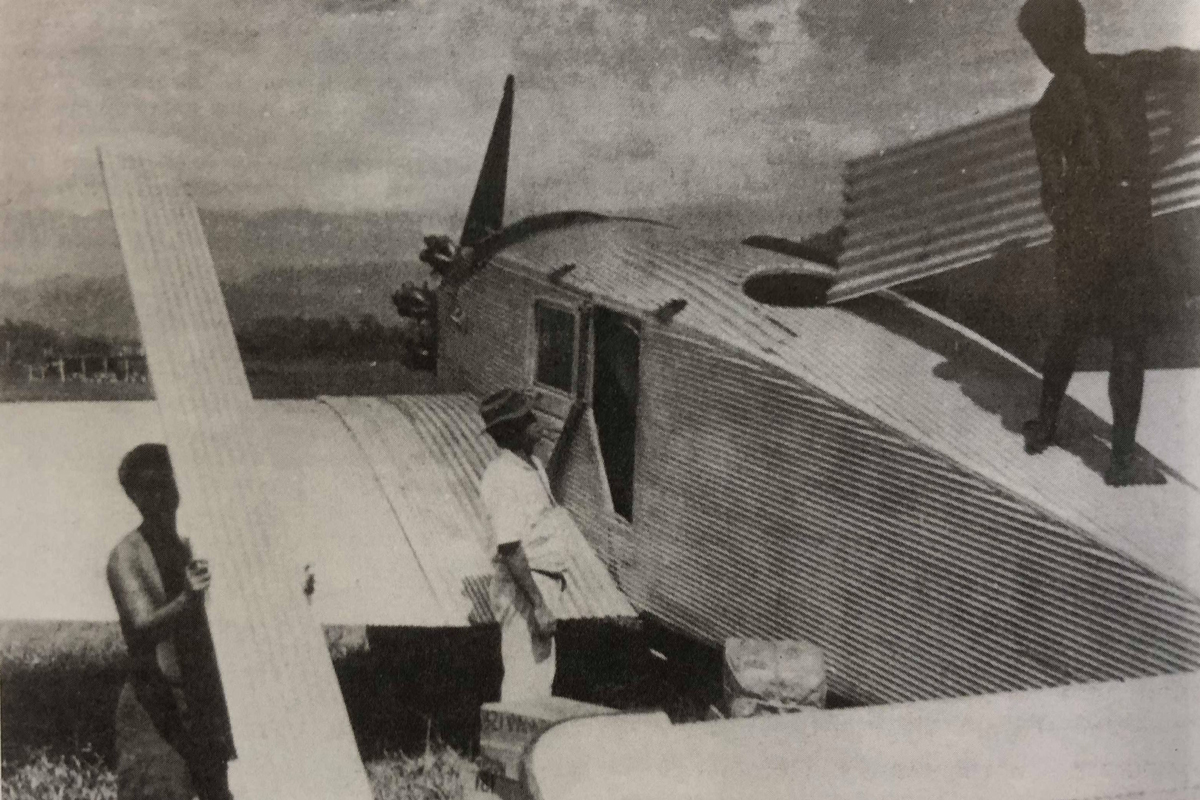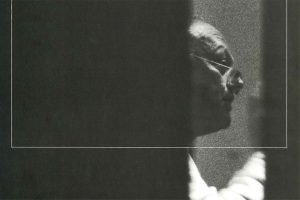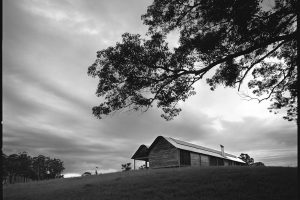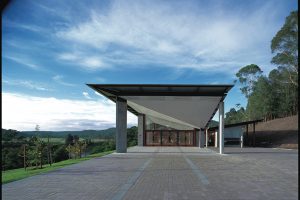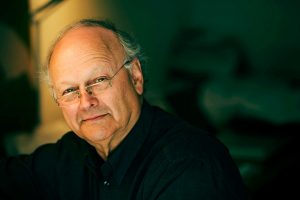IT’S BEEN SAID THAT WE MAKE OUR BUILDINGS AND OUR BUILDINGS MAKE US
In the book ‘Kangaroo’, D.H. Lawrence, in the 1930’s wrote, “It is said that man is the chief environment of man, That, though right, was not true in Australia. Man was there, but the principle is pretty right compared to most places, where we have the environment there still, modified by the aboriginal people, but intact in many parts since European arrival. Our great painter who died five to seven years ago, said, “the land made the aboriginal people, the land is now making Europeans Australians.” I think he is right. We are all of the sudden being modified by the land. Remember we had many cultures in Australia. One of the great things about the country is that we have nationalities from all over the world. And the beautiful thing is that we have the land that is common to all of us, and it’s the thing that we must work with and not against. It’s a great joy to see the pollution level dropping, the harbor water cleaning up. It’s fantastic what can be done. So we do not have to worry about the impossibility. We must be encouraged by the possibilities.
We have 19 million people in Australia. It’s not that many people to say, but in terms of our land and occupation, it is quite dense, not compared to your density, but compared to density of other parts of the world. It leaves vats areas that are untouched. The great worry we have is having suburbs stretching from Melbourne to Perth, some 3,000 kilometers. It would be a disaster, and it might easily go that way. We hope and we are planning that it doesn’t. One of the great architect said that recent discoveries of the values of the traditional forms of medicine, technology, and agriculture have led to a revived interest in pre-industrial knowledge. And that the field of vernacular architecture offers an abundance of concepts that can be of use to us today. Now I stress the last statement because what I’ve seen just in the city here in the last three days, tell me that you have a wealth of traditional buildings that can be of use to you as architects today. The important thing is to not take the aesthetics of the work, but understand the principles behind the work. It’s principles behind the work that really count.
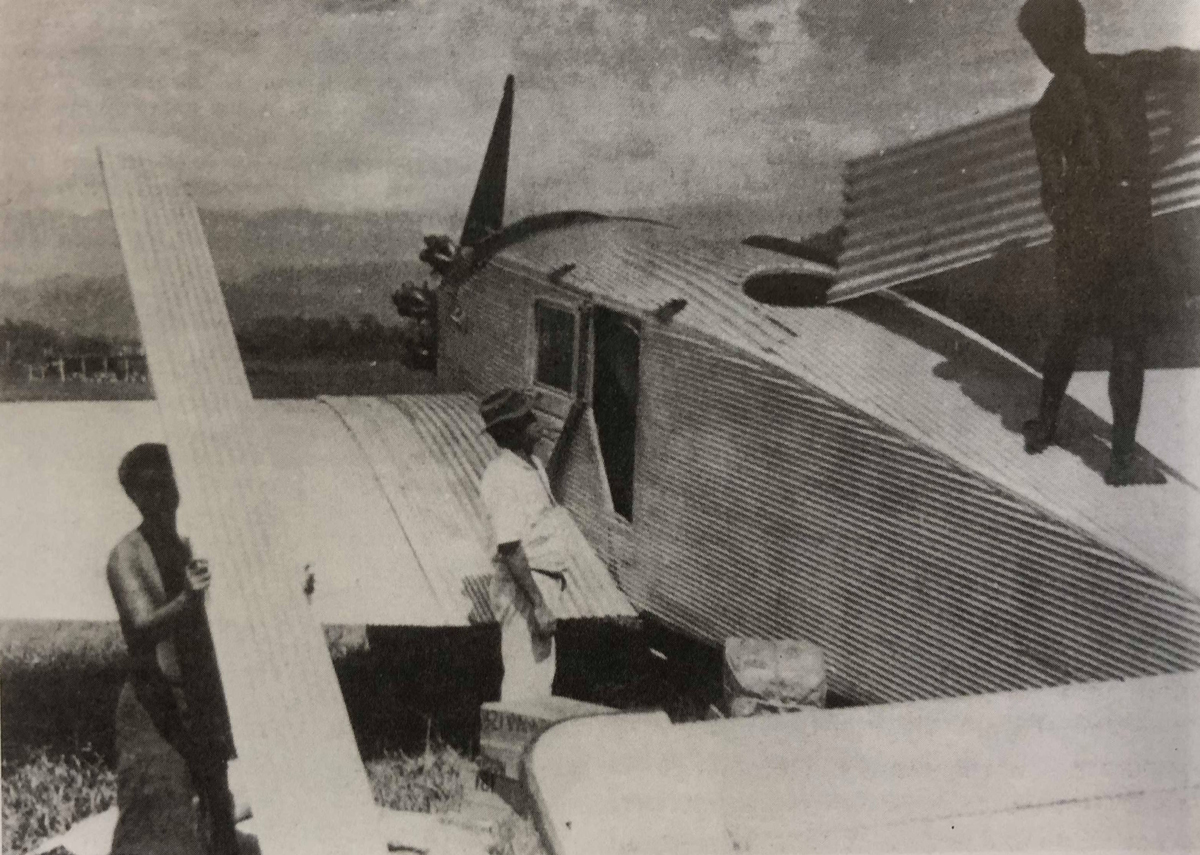
Sheets of glavanised corrugated iron being loaded into a junkers w/34 (Photo from Leaves of Iron by Philip Drew, The Law Book Company 1985)
I grew up on the island of Papua New Guinea, where transport was entirely by air. They carried cargo and numbers of people on the order of three times that of any airfield in the world. And extraordinary time, and my childhood was about light. It was about understanding about materials, how to bring materials, how to transform materials, and how they go together.
And of course, the early days of Australia, this wonderful architecture came to us by the British. Great influences from India. The world veranda comes from India, which comes from Guava, to Guava from Portugal, the word veranda from viara, the shade covering. And one of the beautiful things about these buildings is the shade level, the horizontality. But they are too narrow, these buildings in the veranda. And yet if you make many of them too deep, the actual sun penetration in the wintertime is not there, and the heat buildup in the summer time, coming down in this zone through here, is considerable. So the buildings were often very hot in the summer and very cold in the winter. And the veranda was never deep enough to be able to sit on and enjoy living. In many of your traditional buildings, the whole room is a veranda. I saw this week the most beautiful dining space that’s entirely outside. It was in fact totally on a veranda.
And yet my early influences come from the Greek Island where they’re known to build on the ridge for protection, and to build on the ridge here was about prospect and refuge. This is the refuge, and they’re able to look out – the prospect. This is the basic requirement I believe of all humans-the ability to have protection, the psychological security, as well as to be able to see beyond and to see who is coming and who is going and the way the pattern changes. All the influences are very important. Things I learned from the Greek Islands were things like, why are all the buildings white, why are domes painted red, why are walls thick and with little windows. These are all critical issue related to these buildings. They are questions, they are principles, and so we know that lime mixed with slate, burned, added with water, produces the most fantastic paint which is a water repellent, a disinfectant, a light reflector, and a heat reflector. Why would you use any other color on a very hot Greek Islands? Except for the most sacred part, with the minimum amount of oxide available on the island, red oxide, which you place on the dome of the church, This is a hierarchy, ascending: color, availability of material, and the massive wall that picks up the heat, set with minimum windows because of the glare factor and the heat father. One is dealing here with the principles.
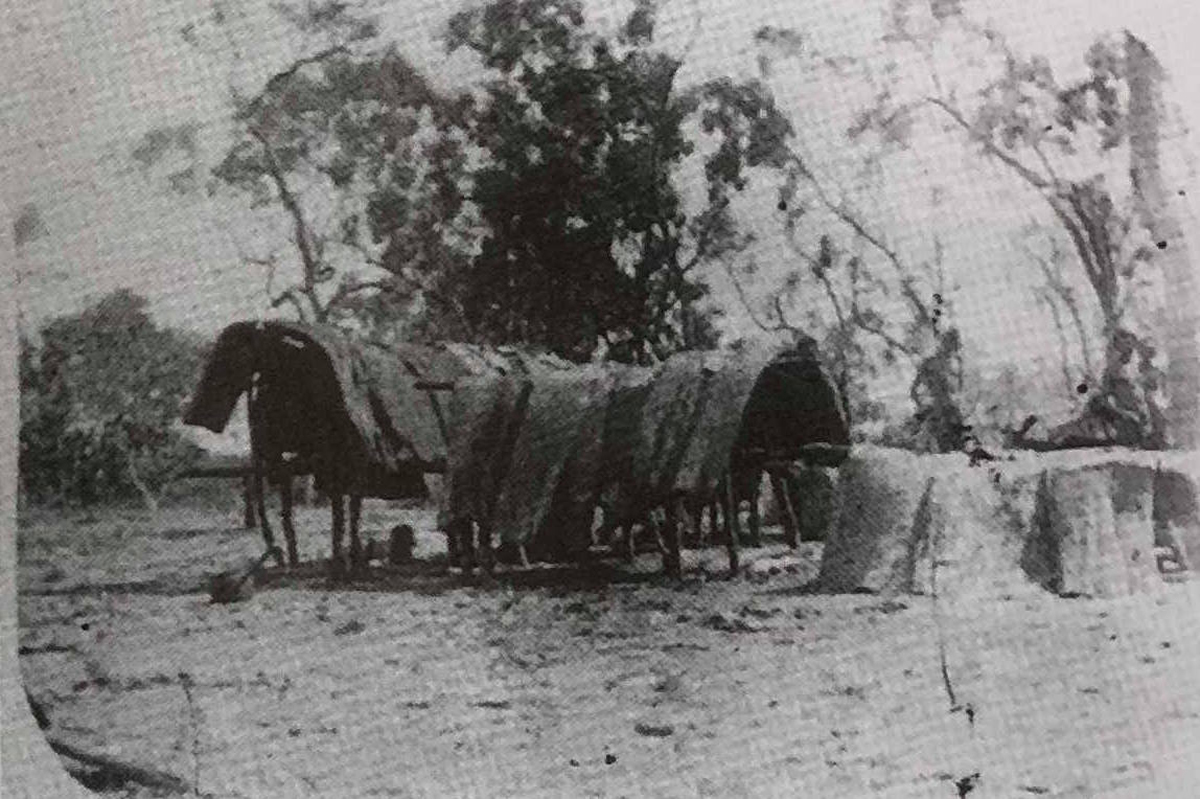
traditional Aboriginal house, photographed by Walter Roth C.1905
And then another principle, a farming principle. Long ago developed, where they place walls on contours, and when it rains, the walls collect the water, send it down deeply into the ground. So that it doesn’t run up into the ravine, in this case, or into the river systems. They were able to reroute it deeply into the ground, and of course in addition on top of all of this, which is necessary, there are deep-rooting trees which hold the water table down. And then you don’t get the runoff, and all the sanitation about the river systems and the pollution and it keeps our rivers as such.
Then you go to the building, the sun lighting it on the other side. The qualitative factors of light and bouncing light are supreme. The heat is not excessive, but the quality of its reflectivity is just superb. To paint the roof white so that it reflects the heat, reflects the light, to me is supreme. This is just the principle of people working in their environment, understanding their place.
Or we go to Spain, the same principles, the building is when the light intensity on the outside is higher than the inside, then you get an ability to look out and not be seen.
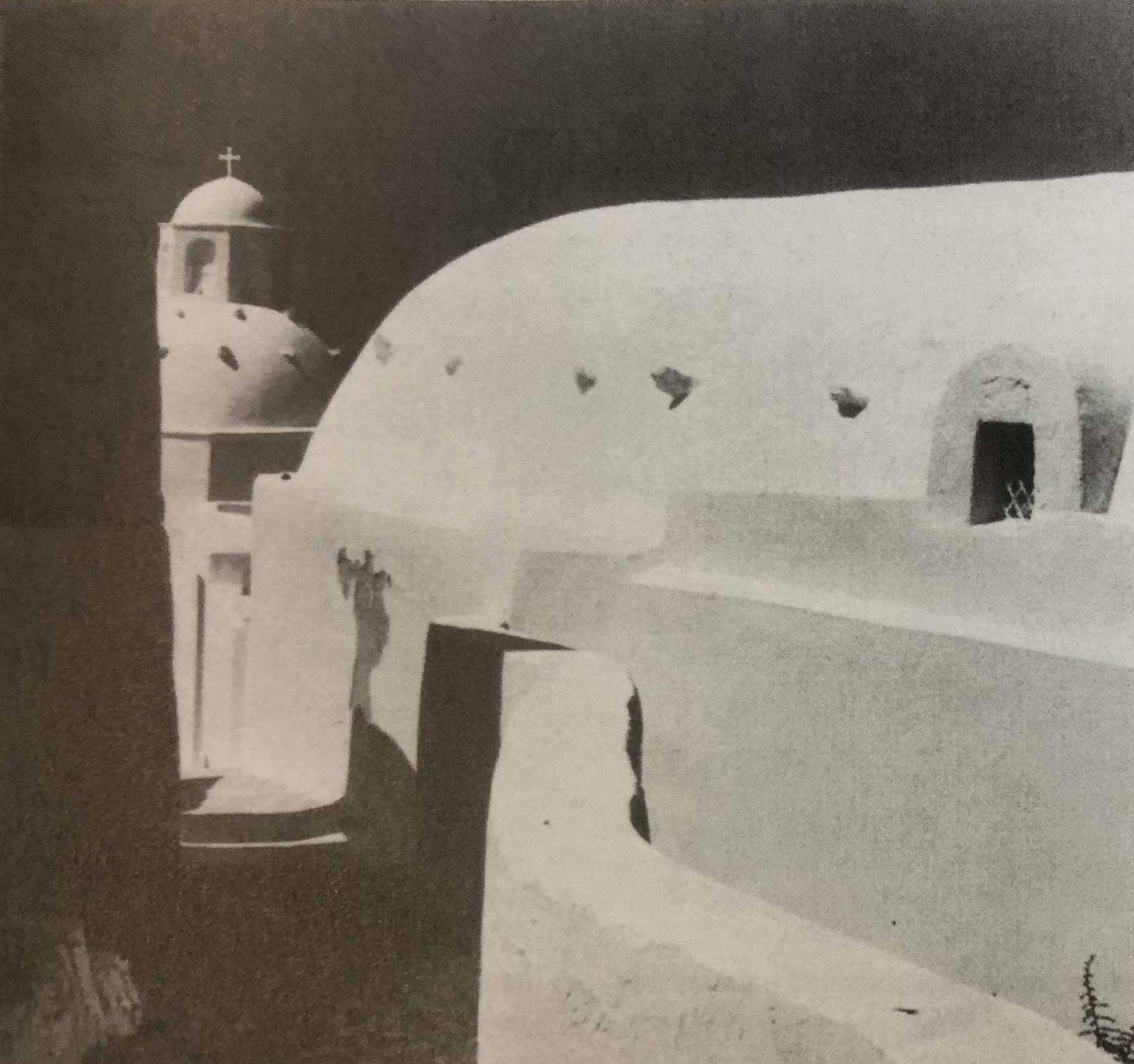
Thira, where Murcutt made his first trip in 1962

Maison de Verre (glass house) by Pierre Chareau, 1928-31
On the other hand, with a modern building like Pierre Chareau’s Maison de Verre, we have the daylight – we can’t see what happening, but at nighttime without this sort of light in the diagram replacing the sun. Then, the lights of high intensity create the sun so you can have privacy inside. The refuge as well, with the prospect coming into the side window and the garden to the rear, as views to the garden and access to the garden.
These are just basic principles that we can work with.
Or we have a project in Sweden that in my early days was extremely important to me.
To be able to understand the horizontality, the ability to be make a section between the glass and the walls all the way around, a slice of the forest. All of the sudden, the relationship between the architecture and the landscape.
Another important influence. The leads to my real appreciation of the work of Aalto, which has come much more in recent years. But the work of Mies van der Rohe. My father gave me, very early on, documents from the United States on building. And I had to be questioned on the buildings, I had to read them and then be asked to discuss them with my father when I was at the ages of 13, 14 and 15. The Farnsworth House, and the documentation on the Barcelona Pavilion were critical to my development.

interior of Crematorium chapel at Gavle, Sweden (Photo from Lindman Photography)
มีคนบอกว่าเราสร้างอาคารของเราและอาคารของเราสร้างตัวเราอีกทีหนึ่ง ในหนังสือ “Kangaroo” โดย D.H. Lawrence ในปี 1930 เขียนเอาไว้ว่า “มีคำกล่าวว่ามนุษย์เป็นสิ่งแวดล้อมที่สำคัญที่สุดของเผ่าพันธุ์ เรื่องนี้ไม่อาจปฏิเสธได้ แต่มันไม่เป็นเช่นนี้ในออสเตรเลีย มนุษย์อาศัยอยู่ที่นั่น แต่ถูกมองข้ามไปเหมือนไม่มีตัวตน” เรื่องนี้มีการเปลี่ยนบ้างแต่ไม่มากนัก เรามีสภาพแวดล้อมที่ถูกสร้างขึ้นมาโดยคนอะบอริจิน และมีหลายส่วนยังคงสภาพเดิมนับแต่ชาวยุโรปเข้ามา Roy Grease จิตรกรผู้ยิ่งใหญ่ของเรา ผู้ซึ่งเสียชีวิตไปเมื่อประมาณ 5-7 ปีก่อนได้กล่าวไว้ว่า “แผ่นดินนี้เป็นสิ่งสร้างคนอะบอริจิน แผ่นดินเป็นสิ่งที่ทำให้คนยุโรปเป็นคนออสเตรเลียขึ้นมา” ผมคิดว่าเขาพูดถูก พวกเราถูกสร้างขึ้นมาด้วยสภาพแวดล้อมจำได้ว่า เรามีวัฒนธรรมมากมายในออสเตรเลีย สิ่งพิเศษสิ่งหนึ่งของประเทศของเราของเราคือเรามีเชื้อชาติต่างๆ จากทั่วโลกมาอยู่ที่นี่ และความงดงามอยู่ที่เรามีสภาพแวดล้อมร่วมกัน มันเป็นสิ่งที่เราจะต้องสร้างสรรค์ร่วมกันไม่ใช่ทำลายมัน มีเรื่องน่ายินดีมากเมื่อได้เห็นตัวเลขมลภาวะลดลง คุณภาพของน้ำในอ่าวสะอาดขึ้น สิ่งที่เกิดขึ้นเป็นเรื่องน่าอัศจรรย์ ดังนั้นเราจะต้องไม่กังวลในเรื่องความเป็นไปไม่ได้ เราต้องเชื่อว่าทุกสิ่งเป็นไปได้ เรามีประชากร 19 ล้านคนในออสเตรเลีย มันเป็นจำนวนไม่มากนัก แต่ในแง่ของดินแดนและการถือครองแล้วมันค่อนข้างจะหนาแน่น ไม่ใช่เทียบกับความหนาแน่นของคุณแต่เปรียบเทียบกับส่วนอื่นๆ ในโลก มันยังมีพื้นที่อีกกว้างใหญ่ไพศาลที่ไม่มีคนอยู่ สิ่งที่น่าห่วงคือเรามีปริมณฑล จาก Melbourne ถึง Perth ยาวประมาณ 3,000 กิโลเมตร
Hassan Fathy สถาปนิกผู้ยิ่งใหญ่เคยกล่าวเอาไว้ว่า การค้นพบในเรื่องของภูมิปัญญาดั้งเดิมเกี่ยวกับยารักษาโรค เทคโนโลยี และการเกษตรกรรม ในระยะหลังมานี้ได้นำไปสู่การฟื้นฟูความสนใจเกี่ยวกับความรู้ในยุคก่อนอุตสาหกรรมขึ้นมา และในงานสถาปัตยกรรมท้องถิ่น ก็ได้ให้แนบคิดมากมายที่สามารถนำมาใช้ในปัจจุบัน ผมยกคำพูดของ Fathy ขึ้นมาก็เพราะว่าสิ่งที่ผมได้เห็นในช่วงสามวันที่ผ่านมานี้บอกกับผมว่าพวกคุณมีสมบัติล้ำค่าที่เป็นอาคารแบบดั้งเดิม ซึ่งมีประโยชน์ต่อสถาปนิกในปัจจุบันนี้ สิ่งสำคัญไม่ได้อยู่ที่ความสวยงามของงาน แต่อยู่ที่ความเข้าใจในหลักการเบื้องหลังตัวงานต่างหาก
ผมเติบโตขึ้นมาบนเกาะปาปัวนิวกินี ซึ่งต้องเดินทางไปถึงได้ทางอากาศเท่านั้น ที่นี่การขนส่งสินค้า และผู้คนในปริมาณที่สูงกว่าสนามบินทั่วไปถึงสามเท่า มันเป็นช่วงเวลาที่ต้องเรียนรู้เกี่ยวกับวัสดุว่าจะการกับมันอย่างไรให้มันไปด้วยกันได้
และแน่นอนว่าในออสเตรเลียยุคแรกๆ นั้น งานสถาปัตยกรรมที่สวยงามเป็นฝีมือของคนอังกฤษมีอิทธิพลของอินเดียให้เห็นอยู่มากทีเดียว คำว่า veranda มาจากอินเดียซึ่งมาจาก Guava และ Guava มาจากโปรตุเกส veranda มาจาก viara ซึ่งแปลว่าการบังเงา ความสวยงามที่เห็นได้จากอาคารเหล่านี้คือเรื่องแสงเงา และระนาบแนวนอน แต่ระเบียงแคบไปหน่อย แต่ถ้าคุณทำให้มันลึกเกินไป แสงอาทิตย์ที่ส่องเข้ามาในฤดูหนาวจะมาไม่ถึง และความร้อนระอุในฤดูร้อนที่แผ่กระจายเข้ามาในพื้นที่แถบนี้มักจะร้อนมากในฤดูร้อน และหนาวมากในฤดูหนาว ตัวระเบียงไม่มีความลึกพอที่จะใช้นั่งเล่นได้เลย แต่ในอาคารแบบดั้งเดิมของคุณ ห้องทั้งห้องคือระเบียง ผมได้เห็นพื้นที่ทานอาหารที่สวยที่สุดซึ่งอยู่ด้านนอก จริงๆ แล้วมันคือระเบียงทั้งระเบียงนั่นเอง
ในช่วงแรกผมได้รับอิทธิพลจาก Greek Islands ซึ่งมีความชำนาญในการสร้างแนวป้องกัน ซึ่งเป็นทั้งที่พักและที่ชมวิวทิวทัศน์ ผมเชื่อว่ามันคือความต้องการพื้นฐานของมนุษย์ ความต้องการที่จะรับการป้องภัย มันมั่นคงทางจิตใจ รวมทั้งความสามารถที่จะมองเห็นความเป็นไปเบื้องหน้า ใครจะมา ใครจะไป เกิดอะไรขึ้นบ้าง อิทธิพลเหล่านี้มีความสำคัญมาก สิ่งที่ผมเรียนรู้จาก Greek Islands ก็เป็นเรื่องที่ว่าทำไมอาคารทุกหลังถึงเป็นสีขาวหมด ทำไมตรงโดมต้องทาสีแดง ทำไมกำแพงถึงได้หนา และเจาะช่องหน้าต่างเล็กนิดเดียว ทั้งหมดนี้คือประเด็นสำคัญที่เกี่ยวข้องกับอาคารเหล่านี้ มันคือคำถาม มันคือหลักการ และเราก็รู้ว่าปูนขาวที่ใช้นั้นมีส่วนผสมของหินชนวนเผา และเมื่อผสมกับน้ำก็จะก่อให้เกิดสีชั้นดีที่ไม่เปียกน้ำ ไม่เปื้อนรอยด่าง กันแสงและความร้อนได้ดีอีกด้วย ดังนั้นทำไมเราถึงจะไปใช้สีอื่นบนเกาะที่ร้อนมากๆ อย่าง Greek Islands ด้วยเล่า นอกเสียจากส่วนศักดิ์สิทธิ์ที่สุดที่ยอมรับให้มีปริมาณ oxide บนเกาะน้อยที่สุด ซึ่งคือ red oxide ซึ่งทาไว้บนโดมของโบสถ์ มันเป็นเรื่องของลำดับชั้น สีที่สะดุดตา วัสดุที่มีอยู่ และกำแพงขนาดใหญ่ที่เก็บความร้อน การมีหน้าต่างเล็กๆ ก็มีสาเหตุมาจาก ปัจจัยเรื่องความจ้าของแสง และความร้อน มันมีคำอธิบายทั้งนั้น
และหลักการอีกเรื่องคือหลั
พอมาดูที่อาคาร แสงอาทิตย์ส่องมาอีกด้านหนึ่ง ปัจจัยเรื่องคุณภาพแสง และการสะท้อนมีความสำคัญมาก ความร้อนไม่สูงเกินไป แต่คุณภาพของการสะท้อนเป็นเลิ
เราไปดูหลักการแบบเดียวกันที่
สิ่งเหล่านี้เป็นหลักการพื้
หรืออย่างโปรเจ็คต์ในสวีเดน ซึ่งมีความสำคัญต่องานในยุคแรกๆ ของผมเป็นอย่างมาก เพื่อให้สามารถเข้
FIRST PUBLISHED IN ART4D VOL.80 MARCH 2002
Edited and translated from Glenn Murcutt’s lecture in Bangkok on November 3, 2001
Special thanks to the Australian Embassy in Thailand and BHP Steel Building Products (Thailand)
READ MORE ABOUT GLENN MURCUTT

